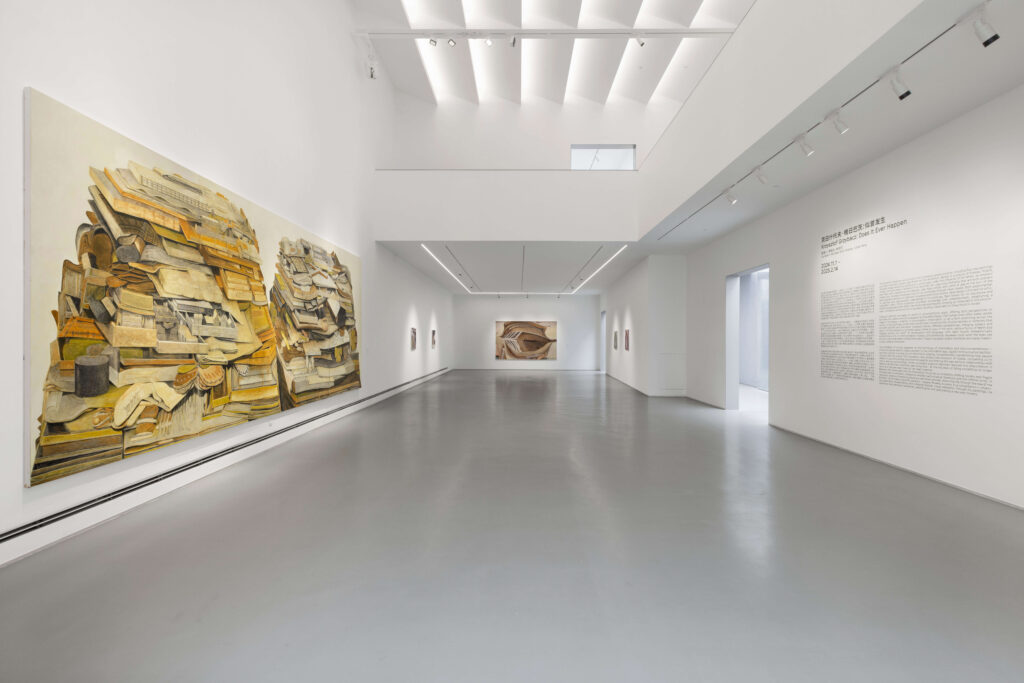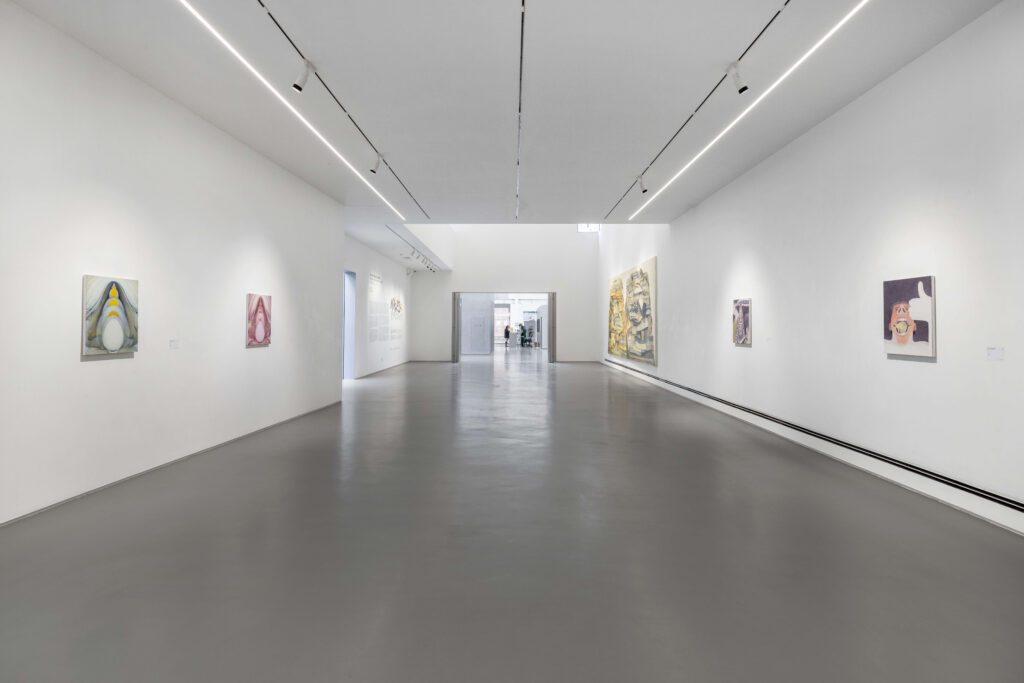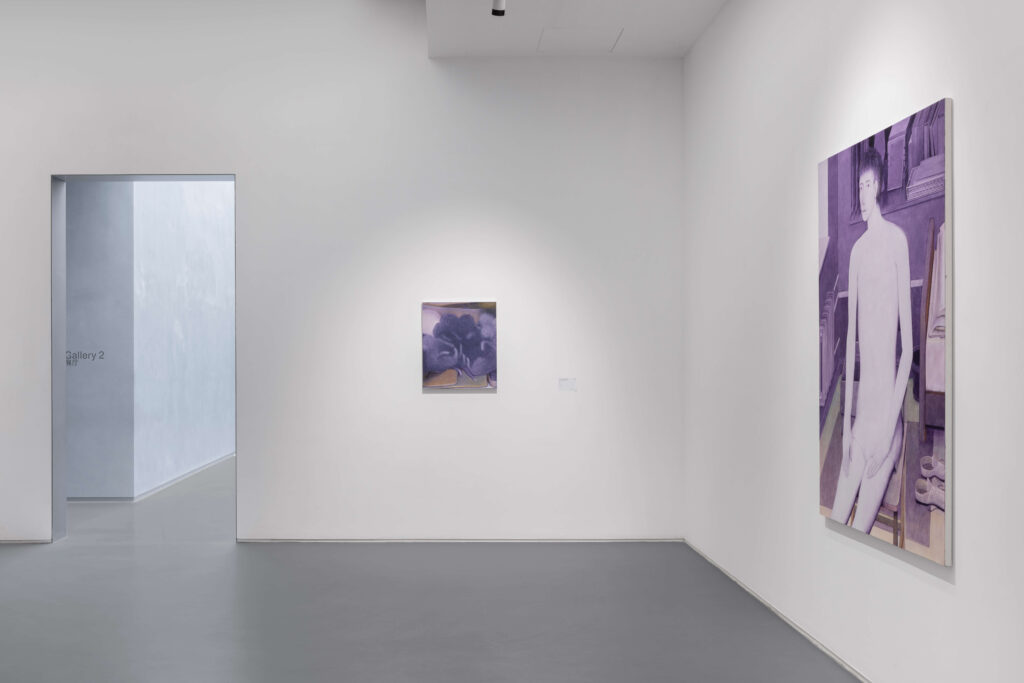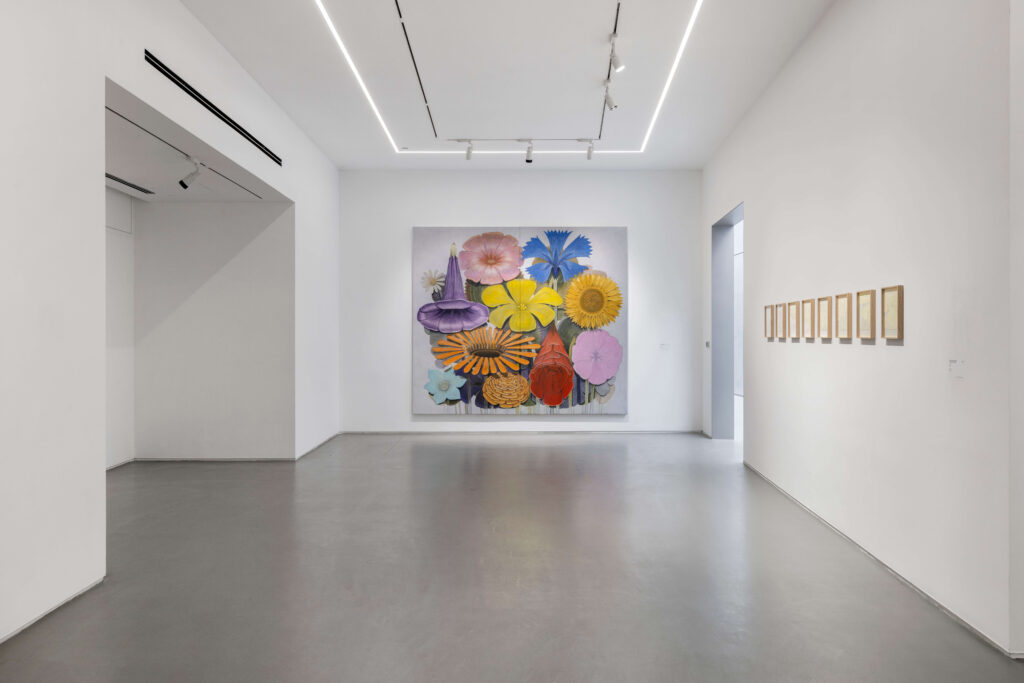Does It Ever Happen
The X Museum
Nov 1, 2024 – Feb 14, 2025
Langyuan Station, E1 (Building10), Chaoyang District, Beijing, China
Website
X Museum is pleased to present Polish artist Krzysztof Grzybacz’s first institutional solo exhibition, titled ‘Does It Ever Happen’. The exhibition will run from November 1, 2024, to February 14, 2025, in Gallery 1-3 at X Museum in Beijing. It features over 20 works from Grzybacz’s recent practice, including five new paintings and eight drawings created specifically for this exhibition. Raised in a suburb of Kraków, Poland, Grzybacz began exploring painting at a young age, under the influence of his father, an amateur painter. His work draws inspiration from everyday life, capturing moments that are both ordinary and filled with unexpected coincidences. Like many artists who came of age at the turn of the millennium, Grzybacz absorbed much of his worldview through mass media. Both experimental, avant-garde animations in television programs and Polish movies, have deeply informed his artistic practice, and subsequently materialized in his paintings. Best known for its expressive and surrealistic style, Polish animation prioritizes knowledge over entertainment, establishing a distinctive approach both within Central Europe and beyond. Growing up immersed in this environment, Grzybacz’s works are rich in narrative, evoking scenes akin to those found in novels.
Grzybacz skillfully arranges his works in unconventional ways, offering bold perspectives on everyday life, where everything appears to flow effortlessly. The human body often takes center stage in his pieces—whether in conversation, observation, or as a form stretching across the canvas. In his paintings, bodies are transformed, morphing into illusive devices or factories that are both familiar and alienated. Grzybacz blends different perspectives, merging subject and object until an ambiguous pictorial space comes to play. In his work, various forms of teeth and tongues outline the “path” of conversation and language, with each mouth metaphorically establishing a link of communication. Flowers simultaneously represent both what the eyes see and the colors that seem to flow from them. These intangible, bodily moments are made material and visible by the artist.
The formation of society depends on the exchange of information and interconnectedness—individuals alone cannot create a society. In the information age, digital communication technology has ushered in a new era of information sharing, fundamentally transforming how people connect with the world. This innovation also propels the evolution of media, compelling us to reflect on our pre-existing cognitive frameworks and altering the way we form relationships with others and our surroundings. Polish sociologist Zygmunt Bauman captures this phenomenon in Making the Familiar Unfamiliar, describing how ‘ all the old ways of doing something no longer work, but the new ways have not yet been invented.’
Between this failed past and the impending future lies a constantly shifting society and fragile interpersonal connections, shaped by endless technological iterations and the infinite scroll. In response, Grzybacz chooses to become a sensitive outsider, observing life through the eye of the beholder. He focuses on specific subjects—people, flowers, a scene, or a conversation—observing, dissecting, reassembling, and collaging familiar visual elements. Through his paintings, he examines the meaning of existence, searching for and speculating a new way forward.
– Michael Xufu Huang and Lisha Yang
Does it Ever Happen is the first institutional solo presentation of Polish painter Krzysztof Grzybacz. Grzybacz explores the status of the contemporary body through the lens of highly charged and incrementally refined personal imagery. His pictures are assembled of a series of interlocking aesthetic components much in the manner of classical music; forms recur and mutate as each encounter is staged in a different context and with new parameters. He shows us that the body is not something fixed, unchanging apart from its time, but rather highly mutable, socially-coded, made machine, defined and redefined continually through the acceleration of communication, discourse, repetition, travel, manufacture and pleasure. For the import and urgency of his project, „Ever Happen” is peopled with seemingly gentle creatures, and with the sorts of quiet moments whose weight we feel even in the absence of clear markers of significance. They’re moments meant to percolate, not foment.
There’s a feeling evoked by a drawing; an idea is immediately recorded, not final, but suggesting a form, and as much as we see it in front of us, we also see how it might be different, how it might evolve or become revised. For all their finality, their flourish, Grzybacz’s paintings share this quality. Each is executed in a single stretch, using unconventional materials, and while there is opportunity for chance in the execution, their layers of complimentary opacity, their breathy thinness, rarely allows for the subsequent reworkings commonly afforded to the painter who chooses oils. In this way, each work is necessarily both a painting, and record of the performance of its production.
Two very large multipanel works, situated in adjoining rooms, define the exhibition. The first, an resplendent frieze from 2024, confronts the viewer with twin heaps of material. Their bulk and nostalgic sepia-palette conceal a vast array of objects: vials of liquid, overturned wine glasses, an army of drawers, interlocking boxes, books, notebooks, trade publications, architectural models (or else, an actual shrunken city block), leather belts, dishes, mattresses, shirts, shoes, ribbons arranged like the ribs of an animal, butterfly wings with the scale and heft of a fiddle-leaf fig, and, of course, flowers, flowers, flowers. When we register the bodies crushed by all this labor abandoned, done, to-be-done, or otherwise, it is hard not to see the painter himself as a sort of antiquarian, wondering aloud how his labor functions, much in the way a classically trained furniture-maker might smoke and pace despondently outside an IKEA.
The second Kwiaty, also completed in 2024, is glimpsed from a distance, and enjoys the presence of a group of unlikely friends squeezing together for a photo: a dowdy bookish type, a smooth interloper, a fussy princess, glancing askance at her reflection, all lit by uncompromising bounce flash, their communal presentation of glee and camaraderie achieving the double erasure of a staged encounter. Of course, they’re not people, they’re flowers, a frequent subject, and some of Grzybacz’s finest. He manages to make them look imposing, warlike, as if a gang of cast-off 1960’s furniture, injection moulded and candy colored, was lurking in a broom closet, conspiring to, well, who knows what? Flowers, after all, are the site of some of the animal kingdom’s most salacious behavior, and in the context of sexual selection, their bright colors do a lot more than reference the heady optimism of the 1960’s.
New works include Saws, Scene, Selfportrait and Sunrise, and in each, Grzybacz deepens and compounds the formal investigations established in prior work. Scene feels like a companion to [Untitled (60×70 mouth work)] and where the first proposes a formal exploding and amalgamation of bawdy communication, the new work seems to suggest a kind of compunction, an enshrining of delicate touch, and a nod towards the volumes of understanding that may make their way across the smallest points of contact, the gentle probing that might illuminate intersubjectivity. Saws might be a more densely packed, more pure take on the labor relations at play in Untitled. It is also, in a sense, Grzybacz’s most frenzied composition, given that it dictates its spatial parameters via the minute air gaps allowed to punctuate a superabundance of the humble hand tools.
The exhibition’s paintings are accompanied by a new series of works on paper, modest in scale and functioning like a kind of coda. Unlike his sketchbook drawings, which encapsulate the ideas of the paintings, the distended body orchestras, delicate networks of cellular communication, absurd and whimsical iambic propositions, these show only the mechanisms of movement and evolution at play in the paintings, without any of the „stuff” that fixes them. They’re like heatmaps, chemtrails or afterimages of the paintings themselves.
Each work in Ever Happen is a node along a delightfully unknowable unfurling; a continual procession of micro and macro activities of interlocking trajectories, and a testament to the futility of labels, genre, movements and other attempts at academic bracketing. For all the stylistic variation, the departures of form and substance, filmic and graphic languages, each time Grzybacz puts pen to page, or sponge to canvas, it is with the same certainty. His detailed axonometric compositions are suffused with the same gentle observations, the same sweet pleasures, as his twisting, distended bodily journeys, as the sleight mark-making of his newest paper works, as the easy sentiments that fill an afternoon spent in his company. He is apart from us, watching, his gaze trained on something off in the distance we’ll never properly see or comprehend. Thankfully, we have the pictures.
– Peter Harkawik









„At the Center of the Onion is Another Onion” Harkawik Gallery
